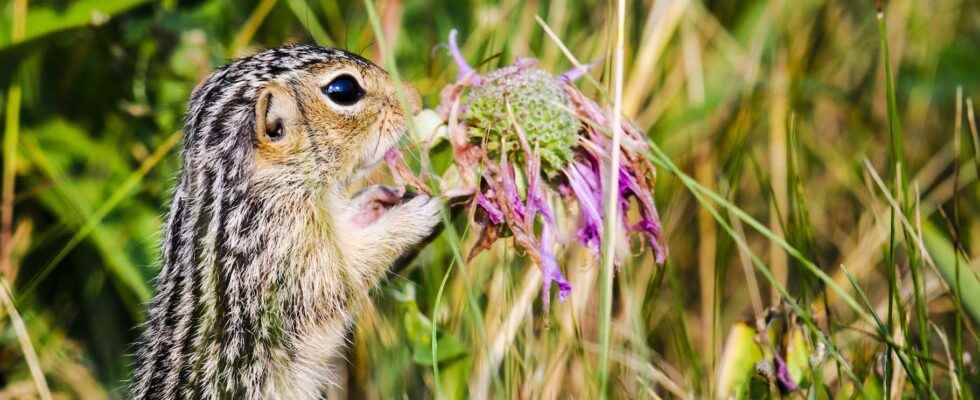The striped ground squirrel. This little squirrel can do what the best trained astronauts are unable to do. He knows how to maintain his muscle mass for several months. So even if he ceased all activity. Including that of food. Researchers have just understood how he achieves this feat.
You will also be interested
[EN VIDÉO] Thomas Pesquet’s advice for becoming an astronaut Thomas Pesquet: “I didn’t forbid myself to register for all the selections, I didn’t forbid myself to do so, and that’s what’s important”
The striped ground squirrel. It is a small squirrel all cute. He lives in North America. And for him, hibernation is sacred. From the beginning of the autonomous, he falls asleep. Only to wake up at the end of spring. He thus spends nearly half the year without eating or drinking. Even if he manages to slow down his metabolism up to 99%, it still loses in the adventure, half of its weight.
Researchers have long wondered how, under these conditions, the striped ground squirrel manages to maintain its musculature. In order to be fully on the attack as soon as the sound comes out hibernation. The curiosity of the scientist. But also with the idea of offering new solutions to people suffering from muscular disorders. Or to astronauts required to make extended stays in space.
Because it is known, an animal – including a human – who does not exercise sees its muscles – but also its bones – atrophy and lose mass and function. Because the body then breaks down the proteins muscles into an ammonium which is then concentrated into urea. A urea that ends up being excreted as urine.
Animals that ingest no protein during hibernation must find another way to provide their muscles with what they need to support their functions. And in the particular case of striped ground squirrels, waking up ready for the mating season and the effort it requires. It is precisely one of these means that an international team of researchers has just detailed.
The 13-lined ground squirrel is common on grasslands from southern Canada to Texas. It is named for the alternating brown and whitish lines running down its back and sides. It lives in burrows and hibernates from October until March or April. #SquirrelsOfTheWorldpic.twitter.com/wIzyctzjRf
—Squirrel Beebz and Dan (@SquirrelBeebz) July 21, 2021
Beyond space, a new therapeutic avenue
They injected urea enriched with carbon isotopes (13C) andnitrogen (15N) traceable in the blood of striped ground squirrels during the summer and at the beginning and end of their hibernation. Why urea? Because researchers already knew that nitrogen – an essential element for amino acids and protein – can be derived from urea by some germs intestinal. A process known since the 1980s as urea nitrogen recovery. The researchers therefore wanted to know if the part of this nitrogen that is not directly used by microbes can then be used by squirrels.
The researchers actually found some of their traced nitrogen in the liver and in the muscles of squirrels. Except in those whose microbiota intestinal had been artificially depleted. Enough to prove that the process of recovery of urea nitrogen is indeed the fact of the intestinal microbes and not of the squirrels themselves. With labeled molecules that first pass from the blood to the intestine where urea is broken down by the microbiota and then metabolites to the animal before ending up in muscle protein. And the longer the hibernation lasted, the more the researchers noted the presence, in the intestine of the squirrels, of microbes capable of releasing nitrogen from urea.
On the strength of these results, the researchers are already planning to apply them to future astronauts on board for space missions in the long run. To save them from damaging muscle loss – and other dangers of spaceflight like ionizing radiation – they could be put into a state of hibernation. What also save food, water andoxygen and produce less waste.
This work could also open up new therapeutic avenues for those suffering from age-related sarcopenia or protein malnutrition. Because researchers believe since the 1990s that the mechanisms of recovery of nitrogen in urea are functional in men. A new situation in which an intervention targeted on the microbiota could make it possible to get out of some impasses. Although more work will be needed to translate the natural mechanism operated by striped ground squirrels into therapy effective and safe for humans.
Interested in what you just read?
